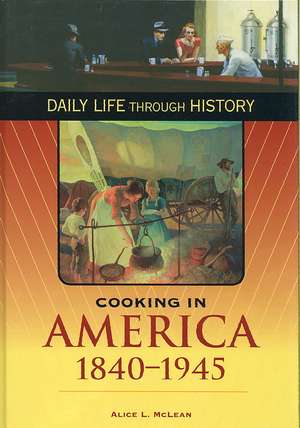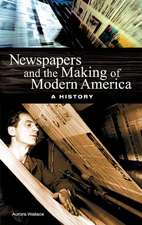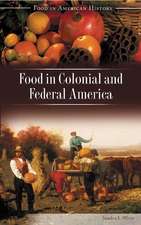Cooking in America, 1840-1945: The Greenwood Press Daily Life Through History Series: Cooking Up History
Autor Alice L. McLeanen Limba Engleză Hardback – 29 aug 2006 – vârsta până la 17 ani
Preț: 221.53 lei
Preț vechi: 376.86 lei
-41% Nou
Puncte Express: 332
Preț estimativ în valută:
42.39€ • 44.26$ • 35.00£
42.39€ • 44.26$ • 35.00£
Carte tipărită la comandă
Livrare economică 15-29 aprilie
Preluare comenzi: 021 569.72.76
Specificații
ISBN-13: 9780313335747
ISBN-10: 0313335745
Pagini: 232
Dimensiuni: 178 x 254 x 21 mm
Greutate: 0.67 kg
Editura: Bloomsbury Publishing
Colecția Greenwood
Seria The Greenwood Press Daily Life Through History Series: Cooking Up History
Locul publicării:New York, United States
ISBN-10: 0313335745
Pagini: 232
Dimensiuni: 178 x 254 x 21 mm
Greutate: 0.67 kg
Editura: Bloomsbury Publishing
Colecția Greenwood
Seria The Greenwood Press Daily Life Through History Series: Cooking Up History
Locul publicării:New York, United States
Notă biografică
ALICE L. McLEAN is Honors Postdoctoral Fellow at Sweet Briar College.
Recenzii
This interesting collection of old recipes, sample meals, and food trends and tips for the 100-year period from 1840 to 1945 offers insight into life and constraints placed by food--its availability, its preservation, and its processing. How the changes in equipment for food and the marketing of food affected cookery and everyday life is chronicled in this well-researched book. McLean discusses how gas and electric stoves replaced hearth cookery; how changes from local dairy sources of milk products to commercial farms changed foodways; and how canning, bottling, and eventually freezing would alter food preparation forever. The book also comments on how home cooks' duties changed--from processing whole animal carcasses, growing their own yeast, and making gelatin from hooves, to preparing their own preserves. A book useful to food historians, cooks, and others studying family life patterns during this period. Recommended. General readers; lower-division undergraduates; faculty and researchers; professionals; two-year technical program students.
In this fascinating book, McLean examines cookbooks as a primary source, showing the enormous changes that occurred on the tables of Americans from the preindustrial period to the onset of World War II. Divided into three chronological sections, the book kicks off with a brief overview of the cooking and preservation methods, major foodstuffs, cooking equipment, cultural influences, and dining customs of the time. The first section includes recipes from three early American cookbooks; the second section demonstrates the rise in popularity of community cookbooks and includes recipes from the first known cookbooks written by an African American and a Hispanic; and the third section shows the rise of male-authored cookbooks and reflects the changes in cooking habits as a result of two world wars and the Great Depression. Each section also includes popular recipes-over 300 in all-taken from cookbooks of the time, ladies' magazines, newspapers, and family collections. The majority of recipes found in this perusable book, including peach ice cream, baked crab, and corn relish, can be made today, although only the most adventurous cooks might try the recipes for squirrel, squab, possum, and pickled pigs' ears. Recommended for the circulating collections of academic and large public libraries.
This is an engaging and useful resource for students from middle school through college. School, public, and academic libraries will want to consider it.
In this fascinating book, McLean examines cookbooks as a primary source, showing the enormous changes that occurred on the tables of Americans from the preindustrial period to the onset of World War II. Divided into three chronological sections, the book kicks off with a brief overview of the cooking and preservation methods, major foodstuffs, cooking equipment, cultural influences, and dining customs of the time. The first section includes recipes from three early American cookbooks; the second section demonstrates the rise in popularity of community cookbooks and includes recipes from the first known cookbooks written by an African American and a Hispanic; and the third section shows the rise of male-authored cookbooks and reflects the changes in cooking habits as a result of two world wars and the Great Depression. Each section also includes popular recipes-over 300 in all-taken from cookbooks of the time, ladies' magazines, newspapers, and family collections. The majority of recipes found in this perusable book, including peach ice cream, baked crab, and corn relish, can be made today, although only the most adventurous cooks might try the recipes for squirrel, squab, possum, and pickled pigs' ears. Recommended for the circulating collections of academic and large public libraries.
This is an engaging and useful resource for students from middle school through college. School, public, and academic libraries will want to consider it.

















